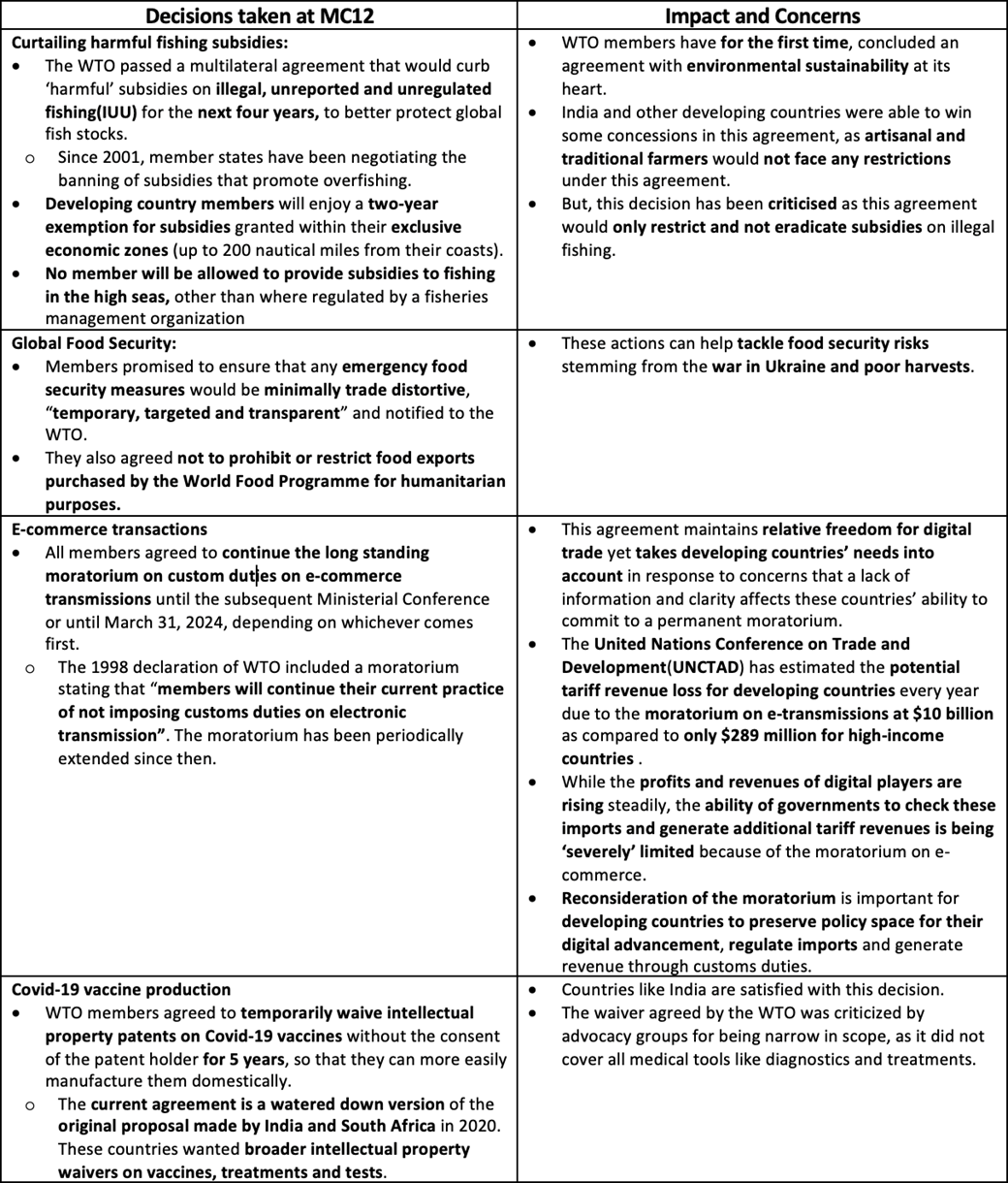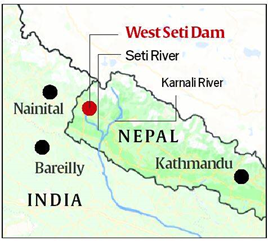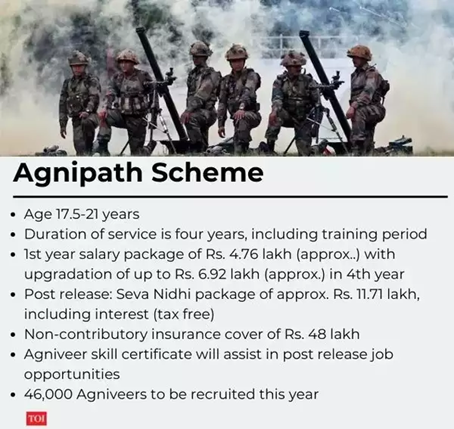Thursday, 23rd June 2022
Bird strikes and Aviation Safety
In News
Recently, two aircrafts had to return to their origin airports and were grounded for maintenance due to damage by bird strike during flight.
What are bird strikes?
- Bird strikes typically occur during the take-off or landing phases of a flight and are among the most common threats to aircraft saftey.
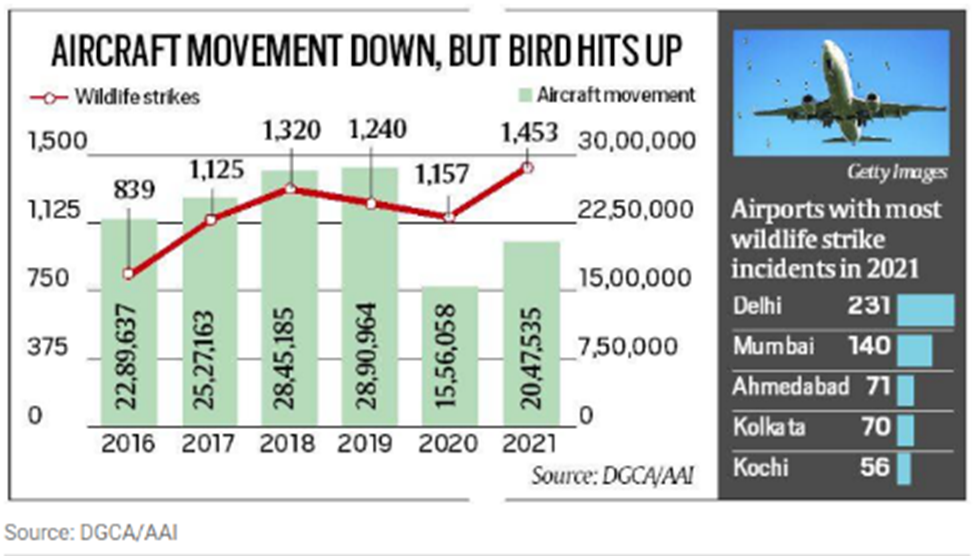
-
- About 60% occurred at or below 30 metres or around 100 feet, according to a paper on the International Civil Aviation Organization (ICAO) bird strike information system.
- Smaller planes are more susceptible to the dangers of bird strikes than larger ones.
- The usual places where the crew knows the bird hit has occurred, include the windshield, the belly and the engines.
- If the bird strikes the engine, it causes serious problems to flying like twisted fan blades, blade separation and vibrations. This can lead to a loss of thrust for the engine and cause manoeuvrability problems for the crew.
- If the collision has happened with a window or a windscreen resulting in cracking of the structure, it is considered a critical problem and pilots look to land the plane as early as possible.
- Apart from this there can be damage to the wing surfaces (flaps, spoilers and slats) and the airframe too.
- Incidents in India: In the year 2021, DGCA data has recorded over 1,400 suspected and confirmed wildlife incidents (for 20.5 lakh aircraft movements), up from nearly 840 cases in 2016 (for 22.9 lakh aircraft movements). Most of the incidents were reported from Delhi and Mumbai airports.
Safety Measure against bird strikes
- All areas surrounding an airport ought to be clear of slaughter houses and garbage dumping (factors which can attract wildlife and increase risks).
- Airports are also expected to have incinerators to dispose of garbage removed from aircraft.
- Airlines are supposed to have some standard operating procedures for bird strike prevention.
- During the training phase of pilots, it needs to be emphasized the importance of the co-pilot to keep looking out for such incidents.
- Understanding bird behaviour is something crew and operators need to be familiar with.
- According to studies, every airport in India has its unique ecological setting and therefore the solutions are different.
- Also, as far as bird hits are concerned, Category I hits, which involve large birds such as kites that are dangerous to aircraft, are on the decline. It is hits that involve small birds are on the rise now.
- In the Indian scenario, a proper database needs to be developed that collects essential details such as the bird species, the height of occurrence and exact geospatial coordinates.
Sources:
- Explained: What are bird strikes and how can they affect flights?
- Understanding bird strikes and aviation safety
Critical Information Infrastructure
In News
The Union Ministry of Electronics and IT (MeitY) has recently declared IT resources of ICICI Bank, HDFC Bank and UPI managing entity NPCI as ‘critical information infrastructure’.
Understanding Critical Information Infrastructure
- The Information Technology Act of 2000 defines “Critical Information Infrastructure” as a “computer resource, the incapacitation or destruction of which shall have debilitating impact on national security, economy, public health or safety”.

- Under the Act, the government has the power to declare any data, database, IT network or communications infrastructure as CII to protect that digital asset.
- Any person who secures access or attempts to secure access to a protected system in violation of the law can be punished with a jail term of up to 10 years.
Need for CII Classification and Protection
- It is a Global Practice: All over the world, the governments have been moving with great force to protect their critical information infrastructure.
- Backbone of Critical Operations:IT resources form the backbone of countless critical operations in a country’s infrastructure, and given their interconnectedness, disruptions can have a cascading effect across sectors.
- IT Failure can cause prolonged outages: An information technology failure at a power grid can lead to prolonged outages crippling other sectors like healthcare, banking services etc.
- For instance, Wave of Denial-of-Service Attacks (an attack meant to shut down a machine or network, making it inaccessible to its intended users) in Estonia, In 2007, allegedly from Russian IP addresses, hit major Estonian banks and government bodies that played havoc for almost three weeks.
- In October, 2020 the electric grid supply to Mumbai had suddenly snappedhitting the mega city’s hospitals, trains and businesses which was suspected to have been a cyber-attack targeting critical infrastructure.
CIIs’ protection in India
- Nodal Agency: The National Critical Information Infrastructure Protection Centre (NCIIPC), created in 2014, is the nodal agency for taking all measures to protect the nation’s critical information infrastructure.
- Basic Responsibility: The basic responsibility for protecting the CII systemshall lie with the agency running that CII.
Source:
- Explained: What is ‘critical information infrastructure’, who protects it?
- Explained: What is protected system and the need for securing critical infrastructure
Image source:
New Corals recorded from Indian Waters
In News
Scientists have recently recorded four species of azooxanthellate corals for the first time from Indian waters- the waters of Andaman and Nicobar Islands.
What are Azooxanthellate corals?
- Azooxanthellate corals are a group of hard corals that do not contain zooxanthellae and derive nourishment not from the sun but from capturing different forms of plankton.
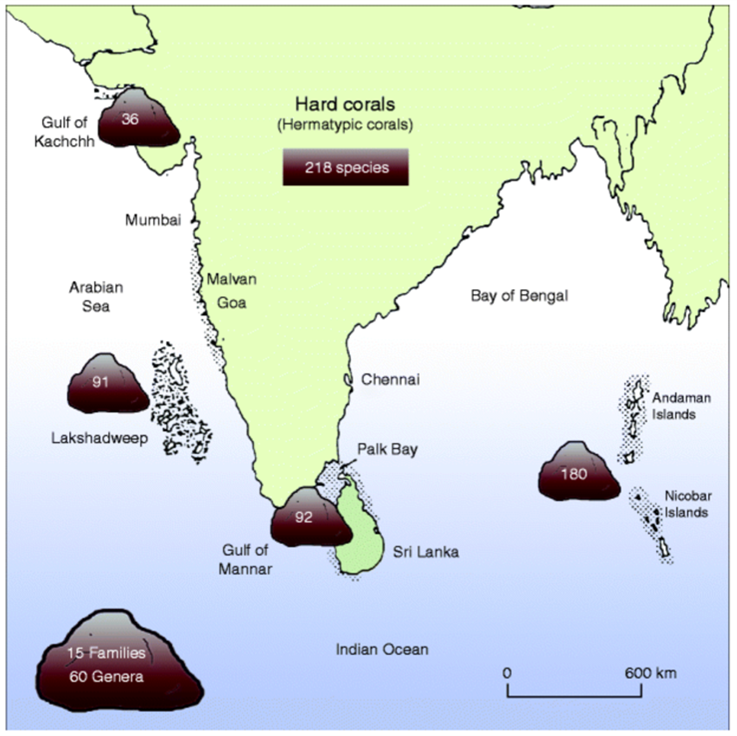
- These groups of corals are deep-sea representatives, with the majority of species reporting from between 200 m to 1000 m while the Zooxanthellate corals are restricted to shallow waters.
- However, Azooxanthellate can also occur in shallow coastal waters.
- These species are not only solitary but have a highly compressed skeletal structure.
- All the four groups belong to the same family
What are Hard corals?
There are two types of corals found globally based on their reef building capacity: Hard Corals and Soft Corals.
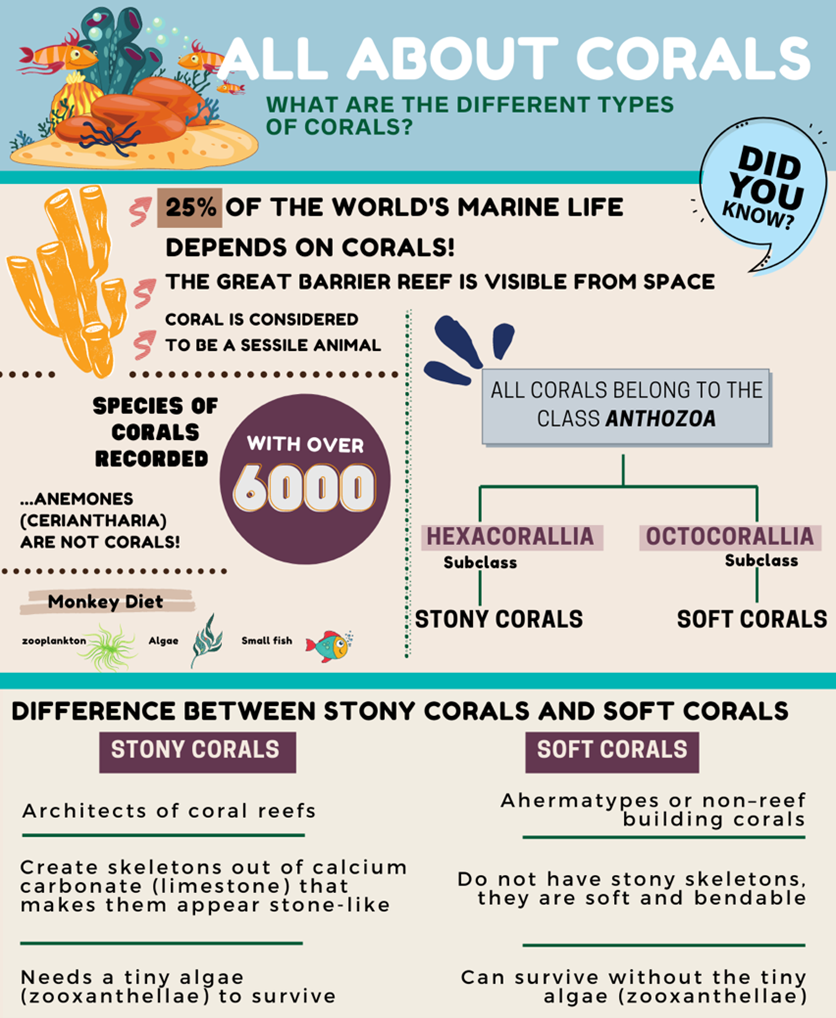
Hard corals:
- Also known as stony coral, hard corals produce a rigid skeleton made of calcium carbonate (CaCO3) in crystal form called
- Hard corals are the primary reef-building corals.
- Hard corals that form reefs are called hermatypic corals.
- There are about 570 species of hard corals found in India and almost 90% of them are found in the waters surrounding Andaman and Nicobar Islands.
Soft corals:
- Also known as ahermatypic coral, soft corals do not produce a rigid calcium carbonate skeleton and do not form reefs, though they are present in a reef ecosystems.
- Soft corals are also mostly colonial; what appears to be a single large organism is actually a colony of individual polyps combined to form a larger structure.
- Soft coral colonies often tend to resemble trees, bushes, fans, whips, and grasses.Deep Sea Corals
- Deep-sea corals are defined as corals that live at depths greater than 50 meters, but most species live in depths several hundred meters deep, in cold, dark, rocky habitats, often far from shore.
- Unlike shallow-water coral reefs, which are limited to warm tropical waters, deep-sea corals are found throughout the world’s oceans, from tropical to polar regions.
- Like their shallow counterparts, deep-sea reefs are created by stony corals that form large geological structures over thousands of years.
Source:
International Olympic Day - Edukemy Current Affairs
International Olympic Day or World Olympic Day is observed every year on June 23 and it's a celebration of sport, health, and being together. The day provides a moment for everyone to gather and get active with purpose. The idea of celebrating an Olympic Day was adopted at the 42nd IOC Session in St Moritz. The chosen date celebrates the founding of the IOC at the Sorbonne, Paris, on 23 June 1894, where Pierre de Coubertin revived the Olympic Games.

The theme this year is 'Together, For a Peaceful World'.
Source:
Ancovax - Edukemy Current Affairs
- Context: The Agriculture Ministry has recently unveiled India’s first Covid-19 vaccine for animals.
- The vaccine, called Ancovax, can protect animals against the Delta and Omicron variants of SARS-CoV-2.
- Ancovax can be used in dogs, lions, leopards, mice, and rabbits.
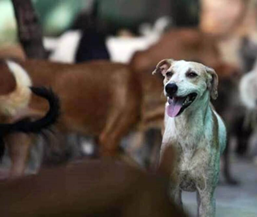
- It is an inactivated vaccine developed using an infectious part of the Delta variant. In addition, it uses Alhydrogel as an adjuvant to boost the immune response.
- There were reports from Russia in the year 2021 that it had developed a vaccine against animals such as dogs, cats, minks, and foxes.
- The aim of the vaccine is to protect endangered animals such as lions and tigers. India reported at least nine Covid infections in Asiatic lions in Chennai zoo in 2021.
Source:
Chelonoidis phantasticus - Edukemy Current Affairs
- Context: Chelonoidis phantasticus, a giant tortoise species has been recently discovered after a century.
- It has been confirmed to belong a Galápagos species long believed extinct.
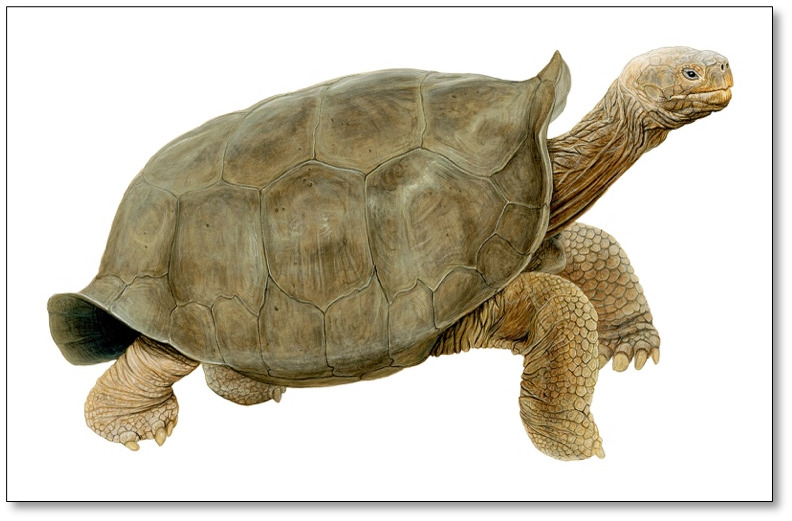
- Chelonoidis phantasticus means “fantastic giant tortoise”. Commonly called the Fernandina Island Galápagos giant tortoise, the species was so far known only from a single individual, collected in 1906.
- It is recognizable by its strongly saddlebacked carapace.
- Chelonoidis phantasticus is a diurnal and terrestrial tortoise inhabiting deciduous forests. Tortoises of this species feed on grasses, herbs, shrubs, cacti.
- Chelonoidis phantasticus is listed as Critically Endangered in IUCN Red Data Book.
Sources:
State Butterfly of Sikkim - Edukemy Current Affairs
- Context: The Chief Minister of Sikkim has recently declared Blue Dukeas the State Butterfly of Sikkim.
- Blue Duke (Bassarona durga durga), is a species of nymphalid butterfly found in the Himalayas.
- It is unique to Sikkim and the eastern Himalayas and was discovered in the state in 1858.
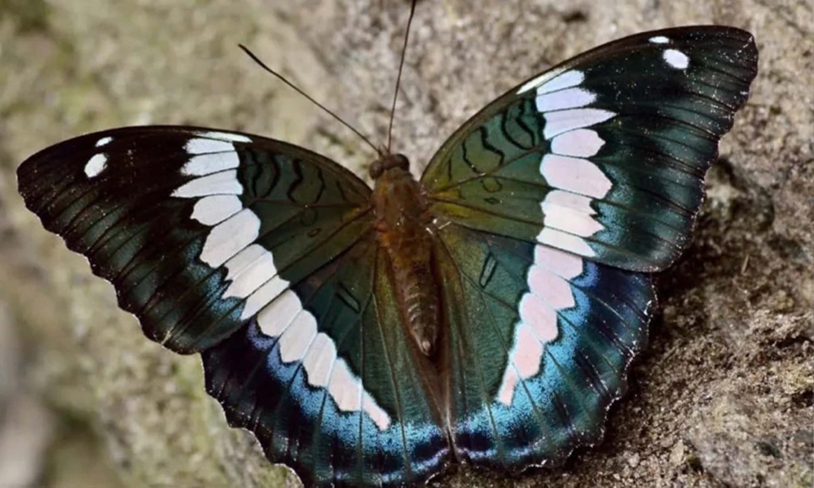
- It represents Sikkim with its two unique colours-blue representing the sky and white depicting the snow clad mountains of the Himalayas.
- It is found at an altitude below 1,500 metres in the Himalayasand is commonly found in areas of South Sikkim, West Sikkim and closer to the State capital of Gangtok.
- It falls in Schedule 2 of the Wildlife Protection Act, 1972 and is a protected species in the Himalayas.
Source:
Image source:
Amyloidosis - Edukemy Current Affairs
- Context: Ex-President of Pakistan has been diagnosed with a rare disease called Amyloidosis.
- Amyloidosis is a rare disease that occurs when an abnormal protein, called amyloid, builds up in one’s organs, affecting their shape and functioning.

- Amyloid deposits can build up in the heart, brain, kidneys, spleen and other parts of the body, leading to life-threatening conditions like organ failure.
- Amyloid isn’t normally found in the body, but can be formed from several different types of proteins.
- Amyloidosis may be secondary to a different health condition or can develop as a primary condition as well.
- Sometimes, it is due to a mutation in a gene, but usually, the cause of amyloidosis remains unknown.
Source:
- Explained: What is Amyloidosis, the ailment afflicting ex-Pakistan president Pervez Musharraf?
- Amyloidosis
Image source:
WTO Fisheries Agreement: Flawed yet Significant
Essence: Negotiations over the global commons are not easy. Recently concluded Agreement on Fisheries Subsidies (AFS) at WTO’s 12th Ministerial conference is thus a landmark event. ASF aims to address harmful fisheries subsidies provided by countries and save the global fish stock from extinction. But there is difference of opinion w.r.t. to these subsidies among the developing and developed countries. Hence, if sustainable fishing is a global agenda, countries with divergent interests must engage in give and take.
Why should you read this article?
- To get updated about an Agreement on Fisheries Subsidies (AFS) at WTO.
- To know points of differences between developed and developing countries on provisions of AFS.
Source:
The Role of Caste in Economic Transformation: LiveMint
Essence: In the context of high unemployment figures and subsequent protests, the article goes into detail about how caste in India hinders economic progress in a number of ways. The article discusses three ways in which caste impedes the economic transformation in India: ownership and land inequality related to productivity failure within the farm sector; elite bias in higher education and historical neglect of mass education, and caste-based entry barriers and exclusive networks in the modern sector.
Why should you read this article?
- To comprehend how caste is a crucial element in economic transition?
- To comprehend the factors that prevented those castes with ties to agriculture from profiting from economic reforms.
- To understand how caste influences policy outcomes and what could be their possible effects.
Source:
Women lead fight for drug-free community
Background
- A survey on substance abuse conducted by the Ministry of Social Justice and Empowerment had identified the Chanlang district of Arunachal Pradesh as among the 272 most vulnerable in the country, and thus, a focus area of the Centre’s “Nasha Mukt Bharat” campaign.
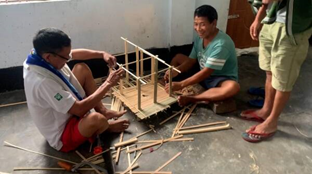
- The women in Changlang were determined to make their homes addiction- free.
About the Women’s initiative
- Men in this village have been addicted to ‘kaani’ — as opium is colloquially referred to in Arunachal Pradesh’s Changlang district.
- Since March 2021, the district administration had been trying to find a solution through a model drug de-addiction programme, one village at a time.
- The district administration formulated a de-addiction programme which would be “bottom up, and in collaboration with the village”.
- The administration directed the women to activate their Self Help Group (SHG) network, and hold a gram sabha meeting, presided by village elders, where the issue was discussed, a list of addicts drawn up, and the idea of de-addiction suggested.
- The initiative, titled “Nasha Mukt Changlang”, targeted entire villages, instead of single individuals
- The crux of the project lay in understanding that the problem was social, not criminal.
Quote: “The question that needs to be answered is why one gets addicted.”
Source:
Share the article
Get Latest Updates on Offers, Event dates, and free Mentorship sessions.

Get in touch with our Expert Academic Counsellors 👋
FAQs
UPSC Daily Current Affairs focuses on learning current events on a daily basis. An aspirant needs to study regular and updated information about current events, news, and relevant topics that are important for UPSC aspirants. It covers national and international affairs, government policies, socio-economic issues, science and technology advancements, and more.
UPSC Daily Current Affairs provides aspirants with a concise and comprehensive overview of the latest happenings and developments across various fields. It helps aspirants stay updated with current affairs and provides them with valuable insights and analysis, which are essential for answering questions in the UPSC examinations. It enhances their knowledge, analytical skills, and ability to connect current affairs with the UPSC syllabus.
UPSC Daily Current Affairs covers a wide range of topics, including politics, economics, science and technology, environment, social issues, governance, international relations, and more. It offers news summaries, in-depth analyses, editorials, opinion pieces, and relevant study materials. It also provides practice questions and quizzes to help aspirants test their understanding of current affairs.
Edukemy's UPSC Daily Current Affairs can be accessed through:
- UPSC Daily Current Affairs can be accessed through Current Affairs tab at the top of the Main Page of Edukemy.
- Edukemy Mobile app: The Daily Current Affairs can also be access through Edukemy Mobile App.
- Social media: Follow Edukemy’s official social media accounts or pages that provide UPSC Daily Current Affairs updates, including Facebook, Twitter, or Telegram channels.

